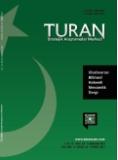MENAZİLNAME YAZMA ESERİNDEKİ CAMİİ TASVİR ÖRNEKLERİYLE GÜNÜMÜZ MENTEŞE SANCAĞI’NDAKİ CAMİ MİNYATÜRLERİ
MOSQUE MINIATURES IN TODAY'S MENTEŞE SANJAK WITH EXAMPLES OF MOSQUE DEPICTIONS IN THE MANUSCRİPT
Author(s): Ömür KoçSubject(s): Visual Arts, Islam studies, 18th Century, The Ottoman Empire, History of Art
Published by: Sage Yayınları
Keywords: miniature; artist; matrakçı; mosque; menteşe; description;
Summary/Abstract: Miniature writing is the art of painting, which has its own technique and features, which is made to better explain and decorate the subjects in the work. Miniature art, which started with the Uyghurs, developed with book decoration and gave rich examples until the 18th century and represented Turkish painting art. Ottoman miniature art, which is a palace art, was developed with the support of the sultan and administrators, and miniatures of important events that took place around the sultan in historical matters were made. The most well-known features of Ottoman miniatures that distinguish them from other country miniatures are their documentation quality. The manuscripts written by Matrakçı Nasuh and made miniatures also have the feature of documentation. The most well-known feature that distinguishes it from previous and contemporary miniatures is that it is the first artist to design landscape-themed miniatures. Suleiman the Magnificent made his second important expedition to Rhodes Island, stayed on the Menteşe Sanjak during the campaign and ruled the state from here. Although many architectural works from the period of the Menteşoğulları Principality have reached the present day, Matrakçı Nasuh and later artists did not make miniatures of the region. With the stylistic features of Matrakçı Nasuh, it is aimed to introduce the values of the Menteşe region with new designs that reflect the characteristics of miniature art of our age and also have documentation qualities.
Journal: TURAN-SAM
- Issue Year: 13/2021
- Issue No: 50
- Page Range: 191-206
- Page Count: 16
- Language: Turkish

